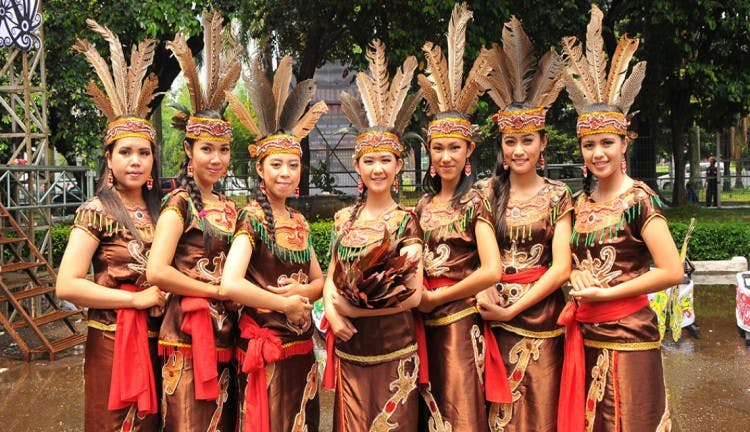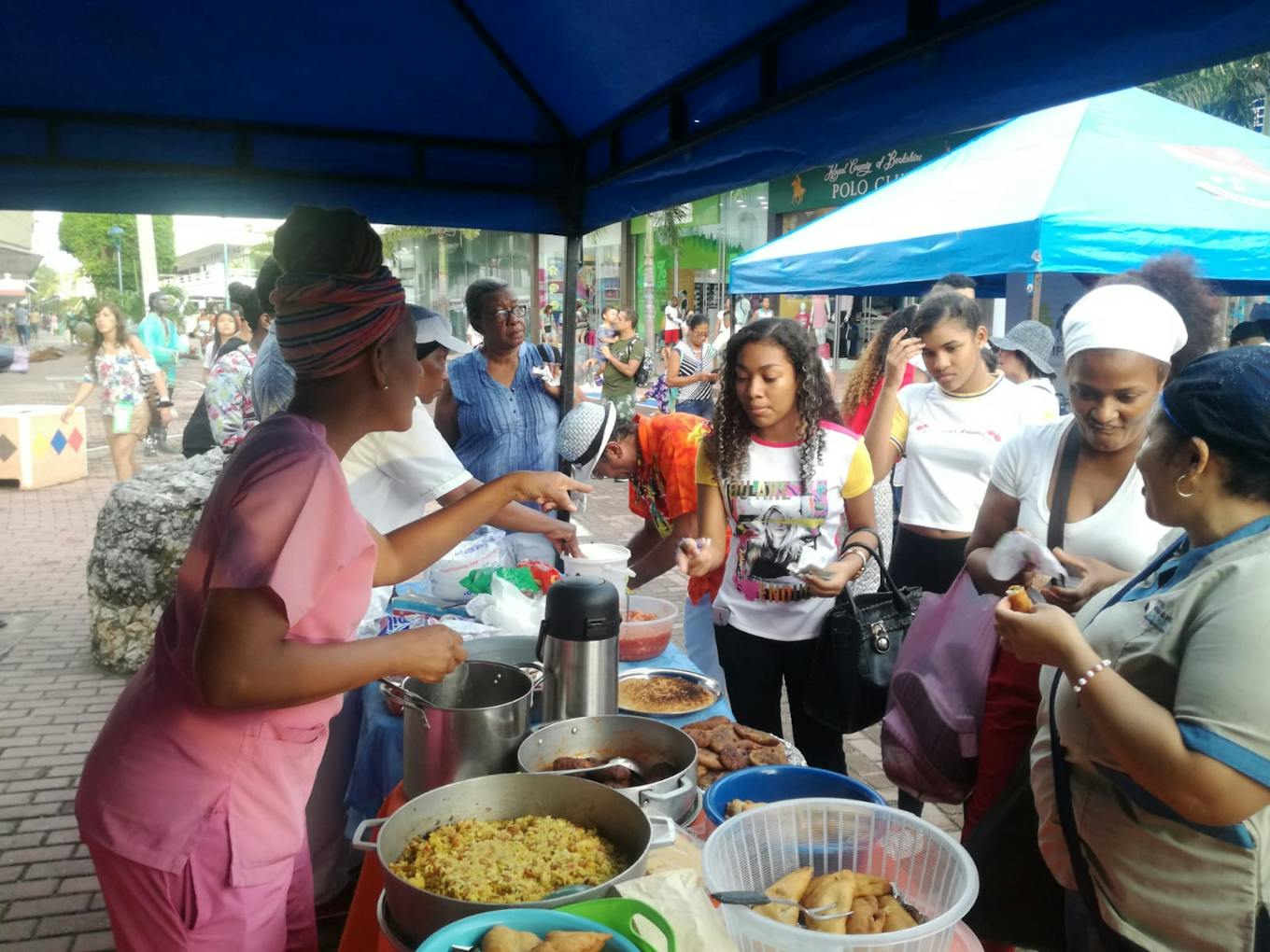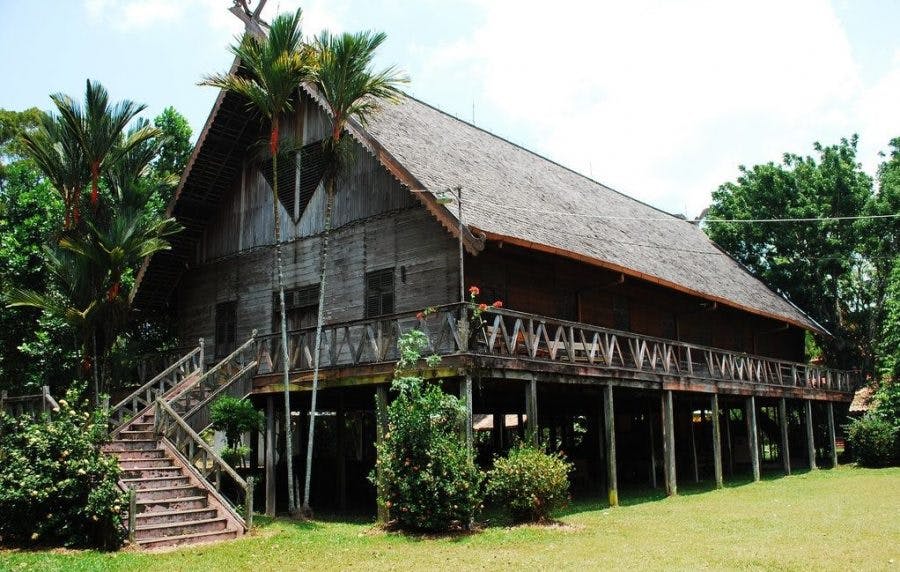“Although indigenous people represent about 5 per cent of the world’s population, we protect 80 per cent of all biodiversity. That should be enough of a statistic to underscore the influence we have,” says Laetania Belai Djandam, a 21 year-old environmental activist descending from the Dayak tribe of Indonesian Borneo.
To continue reading, subscribe to Eco‑Business.
There's something for everyone. We offer a range of subscription plans.
- Access our stories and receive our Insights Weekly newsletter with the free EB Member plan.
- Unlock unlimited access to our content and archive with EB Circle.
- Publish your content with EB Premium.
Djandam is a believer in the role that the world’s Indigenous people can play in addressing the climate crisis, and has spoken at international conferences such as the 2021 United Nations Climate Change Conference (COP 26) in Glasgow.
So, too, is Yurshell Rodríguez Hooker who at the age of 22, together with 24 other young platintiffs and non-governmental organisation Dejusticia successfully sued the Colombian government in 2018 for failing to comply with a target to stop deforestation in the Colombian Amazon.
The 28-year-old environmental engineer, who descends from the native Afro-Caribbean Raizal ethnic group from the Archipelago of San Andrés, Providencia, and Santa Catalina Islands, Colombia, said that she does not regret filing the lawsuit despite having to engage in a time-consuming court battle and navigate the intricacies of the legal system.
To mark international day of the world’s Indigenous peoples on 9 August, Eco-Business asked Hooker and Djandam what the world has to learn from Indigenous peoples about how humanity can co-exist with nature and adapt to climate change.
“
Youth-led climate protests have been receiving a lot of attention, for both good and bad reasons. I find such protests to be overly confrontional, which was partly why I turned to litigation.
Yurshell Rodríguez Hooker
Tell us about your background and how your interest in sustainability began.
Laetania Belai Djandam: I am a diaspora of the Dayak Tribe of Borneo, Indonesia. Dayak is a loose term for over 200 riverine and hill-dwelling ethnic groups, situated mostly in the central and southern interior of Borneo. Indonesia is home to more than three million Dayak people and 400 subtribes, each with its own dialect, customs and territory.

The Ngaju people are an indigenous ethnic group of Borneo from the Dayak group. Image: Ridzwan Abdul Rahman / Quora
I have been passionate about environmental conservation for as long as I can remember. My immediate family members are all working in the field. My mother, who has been working as a forest and community specialist for more than 25 years, brought me to her workplace when I was a kid to learn about forest management.
Yurshell Rodríguez Hooker: I am a descendant of the native Afro-Caribbean Raizal ethnic group from the Archipelago of San Andrés, Providencia, and Santa Catalina Islands, Colombia. One misconception of the Raizal ethnic group is that it is a pure mix of African and British descent. Our forefathers also comprise migrants who were from Asia and parts of Central America such as Nicaragua.

The Raizal ethnic group makes up more than half of the populace of San Andres, the largest island in the Colombian archipelago. Image: Slow Food
Like Laetania, my interest in environmental conservation began from an early age. When I was 10 years old, I was already taking part in intiatives such as beach cleaning and mangrove protection. But my foray into climate activism only started in my early 20s, when I felt I was mature enough to drive change through litigation.
What can the world learn from indigenous people in protecting the environment?
Laetania Belai Djandam: Leverage Indigenous knowledge, which encompasses guidance on how to co-exist with, and be part of, nature, to come up with solutions. The Dayak Tribe, for example, uses plant-based products as traditional medicine.
Enact zoning laws to reduce pollution by instituting prohibitions on specific land uses that are deemed harmful to the environment. Communities in the heart of Borneo have long used zoning as a land management tool, where the forest territory of each village is divided into areas for non-timber forest product collection, hunting and agriculture.
Take only what you need from nature. For example, Dayak customary regulations emphasise not depleting forest products by collecting more than what is needed or harvesting them in ways that would hamper their future growth.

A Dayak longhouse where shared decisions are made. Image: Authentic Indonesia
Work together to tackle climate change. Dayak people stay in longhouses, with 30 to 40 families under one roof. Meetings are held in a common hallway and everyone has a say in the decision-making process. Seeing climate change through a collectivist lens is crucial to moving the needle on the issue.
Yurshell Rodríguez Hooker: Harness nature-based solutions to build up climate resilience. When Hurricane Iota struck in 2020, the mangroves on our island broke up the force of the storm surges and reduced coastal damage.
Also, be self-sufficient. We were able to rebuild our food supplies within a month because we grew our own crops. Speaking of which, support local produce where possible. Eat beef if you must, but purchase it from a local farm.
Enact bans to safeguard the environment. The Raizal ethnic group has regulations that prohibit us from consuming seafood, such as lobsters and fish, during certain times of the year, so as not to disrupt their reproductive cycles.
Additionally, embrace a circular economy. Our tribe composts most of our food waste and uses it as fertilisers for our grounds. We also use debris that washes up on shore, such as sea grass, to weave furniture and fill mattresses.
Lastly, adopt a common language for sustainability. This can be achieved by harmonising green taxonomies among countries.
The theme for this year’s world Indigenous peoples day is youths as agents of change. What’s your view on how young climate activists can most effectively push for change?
Laetania Belai Djandam: There are many incredible young people pushing for change on the frontlines. For example, Greta Thunberg’s Fridays for Future movement rallied people around the globe to be part of the climate movement. But we must ensure that these rallying calls are coupled with policy advocacy on the right levels – so we can work with people in power to make the systemic changes we need.
I think there is also a need to shift the spotlight from the individual to the collective movement. As a young activist myself, speaking up on stage and being fortunate enough to have my platform amplified is just a small part of a larger, shared work that we do with fellow youth, campaigners, activists, and advocates.
Yurshell Rodríguez Hooker: Youth-led climate protests have been receiving a lot of attention, for both good and bad reasons. I find such protests to be overly confrontional, which was partly why I turned to litigation in 2018. Then, we would be talking to the government on its own terms. We would be seen not as children but as peers.










